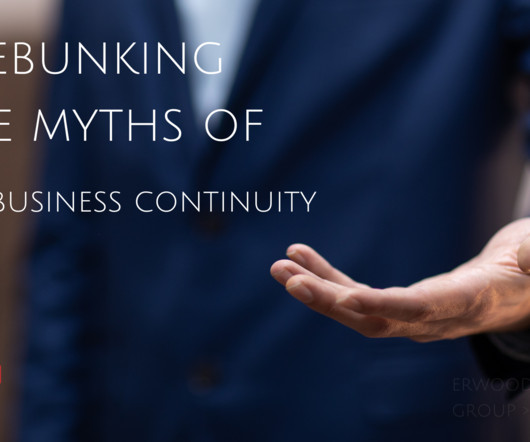Unlocking the Truth: Navigating 20 Myths About Business Continuity
Erwood Group
JANUARY 28, 2024
Contrary to popular belief, business continuity extends far beyond IT recovery. In times of crisis, a comprehensive business continuity plan ensures that every facet of the organization is resilient. Myth 2: Business Continuity Plans Are Only for Large Enterprises.












Let's personalize your content